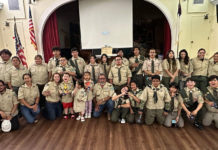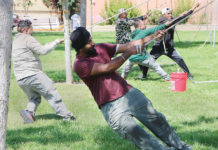
More Watsonville voters have elected to extend the city’s urban growth boundaries for the next 18 years rather than head back to the drawing board and determine a new growth plan, according to initial election results released Tuesday night.
As of 8:16pm, 1,788 votes had been counted for both measures. Roughly 67% of those voters circled in “yes” for Measure Q, compared to the 54% of voters who elected to approve Measure S.
While both measures only need a simple majority for approval, the measure with the most “yes” votes will be the one that is approved.
Measure Q, the result of the committee’s signature-gathering process, proposed an 18-year extension of a so-called Urban Limit Line (ULL) approved by voters via Measure U in 2002. That ULL protected most of the agricultural land surrounding Watsonville from urban development by establishing a modest 25-year outward growth plan for housing and economic drivers. But some of the protections laid out in Measure U are set to expire this year, and the rest sunset in 2027.
Measure S, placed on the ballot by a divided Watsonville City Council in response to Measure Q, also proposed an 18-year extension of the ULL but would allow the council to make adjustments to the boundary during its upcoming general plan update—a massive, multi-month undertaking in which the community will determine what Watsonville should strive to be by 2050.
Measure Q proponents, led by the Committee for Planned Growth and Farmland Protection, told voters that their campaign is the only way to stop “urban sprawl” that would overtake the Pajaro Valley’s rich agricultural lands.
Meanwhile, Measure S proponents, a small collective spearheaded by a handful of city councilmembers, say that an extension of the current growth boundaries would negatively impact the city’s ability to build new homes and entice large employers to set up shop in Watsonville.
The second round of early results is expected sometime after 10pm.












Blue wave? Lol CA is always blue….fyi I didn’t lose anything, I’m gaining so much more by leaving this commie, baby killing, Godless state. Have fun paying all the taxes 👋
Also I don’t vote for my chains of enslavement so have at it with your democracy in hand while I have my 2A. Which do you think is going to protect you? Here’s a hint not your “democracy”.